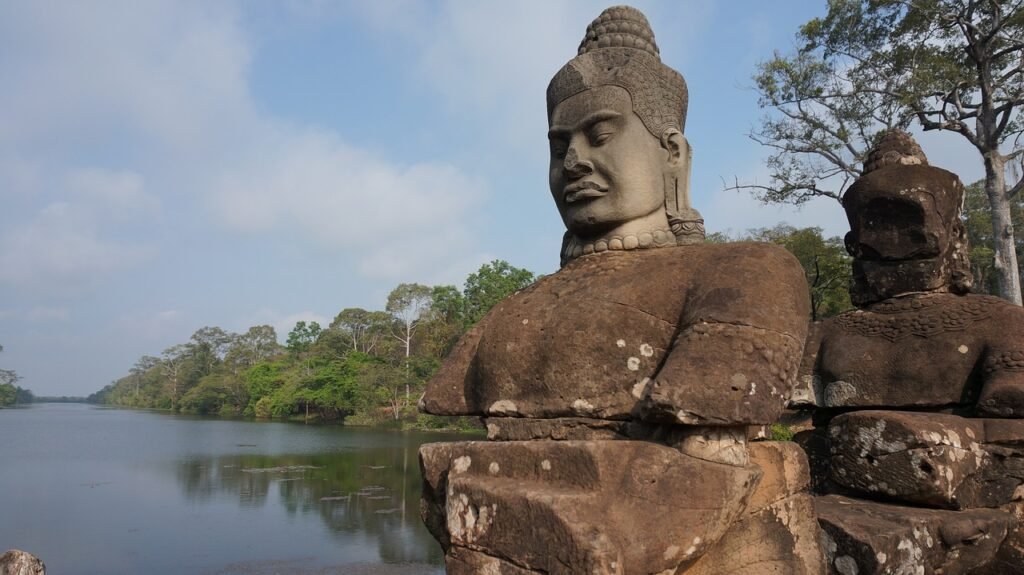Get ready for a magical mystery tour of the Siem Reap temples, where the ancient monuments of Angkor stand as monumental testaments to Cambodia’s rich history and spiritual depth. In this guide with take a no-nonsense approach to getting the best from your visit to the enchanting world of the Siem Reap’s temples
This post may contain affiliate links to things like hotels, tours or products. These help us earn a small commission at no additional charge to you and help keep the lights on at Destination Someplace.
Making The Most of Your Time at The Siem Reap Temples
Embarking on a journey to explore the Siem Reap temples is an adventure that deserves thoughtful planning to fully appreciate the diversity of this archaeological wonderland. The duration of your visit can significantly influence your experience, allowing for either a fleeting glimpse or an in-depth exploration of these historical marvels.
Ideal Visit Durations for a Great Experience
For a truly immersive experience, consider allocating different lengths of time based on your schedule and interests:
Short Stay (1-2 days): Ideal for travellers with limited time, focusing primarily on the iconic Angkor Wat, Bayon, and Ta Prohm. This duration offers a snapshot of the temples’ grandeur but limits deeper exploration.
Medium Stay (3-5 days): A more balanced option, allowing you to explore the key highlights and several lesser-known temples. This duration provides a richer understanding of the architectural and cultural nuances.
Long Stay (6+ days): For the ardent explorers, a longer stay enables a deep dive into the history and artistry of numerous temples, including remote sites, and offers opportunities for repeat visits to favourite spots at different times of the day.
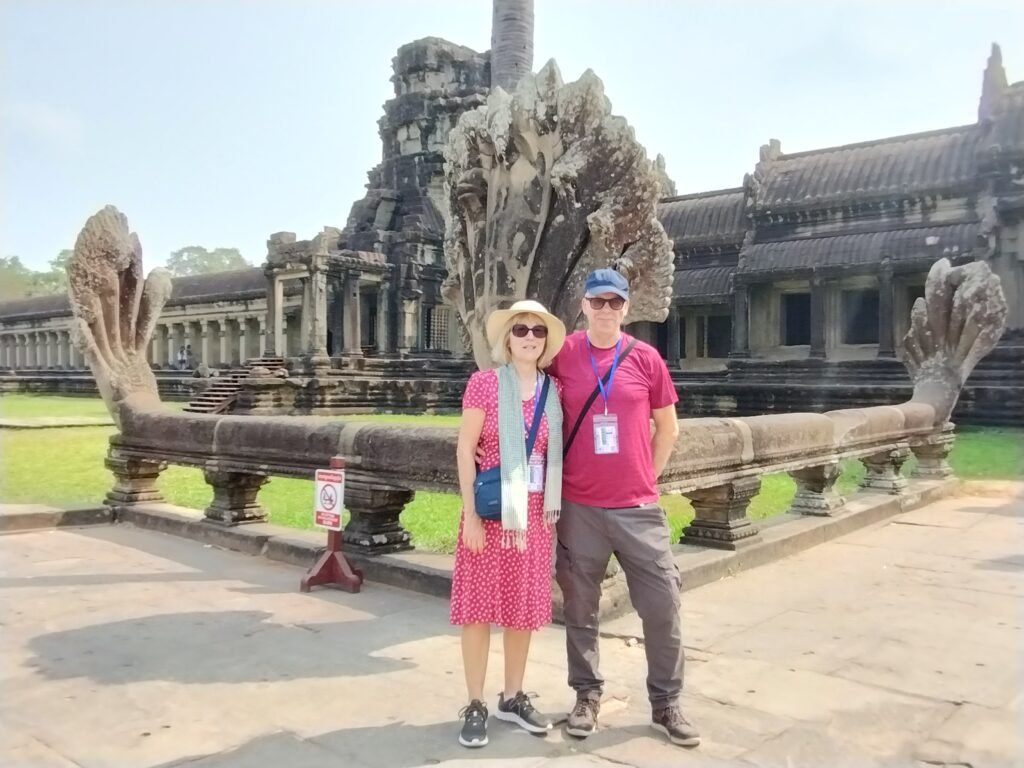
Suggestions for Short, Medium, and Long Stays
Short Stay: Prioritize sunrise at Angkor Wat, the enigmatic faces of Bayon, and the tree-root enshrouded Ta Prohm. These iconic sites offer a condensed yet powerful experience of Siem Reap’s temple heritage.
Medium Stay: Expand your itinerary to include Banteay Srei, known for its intricate carvings, and the grand circuit temples like Preah Khan and Neak Pean. Consider an early morning or late afternoon visit to avoid crowds and experience the temples in different lighting.
Long Stay: Delve into the outskirts to uncover gems like Beng Mealea and Koh Ker. Dedicate time to revisit your favourites, exploring them at a leisurely pace to appreciate their beauty and tranquillity fully.
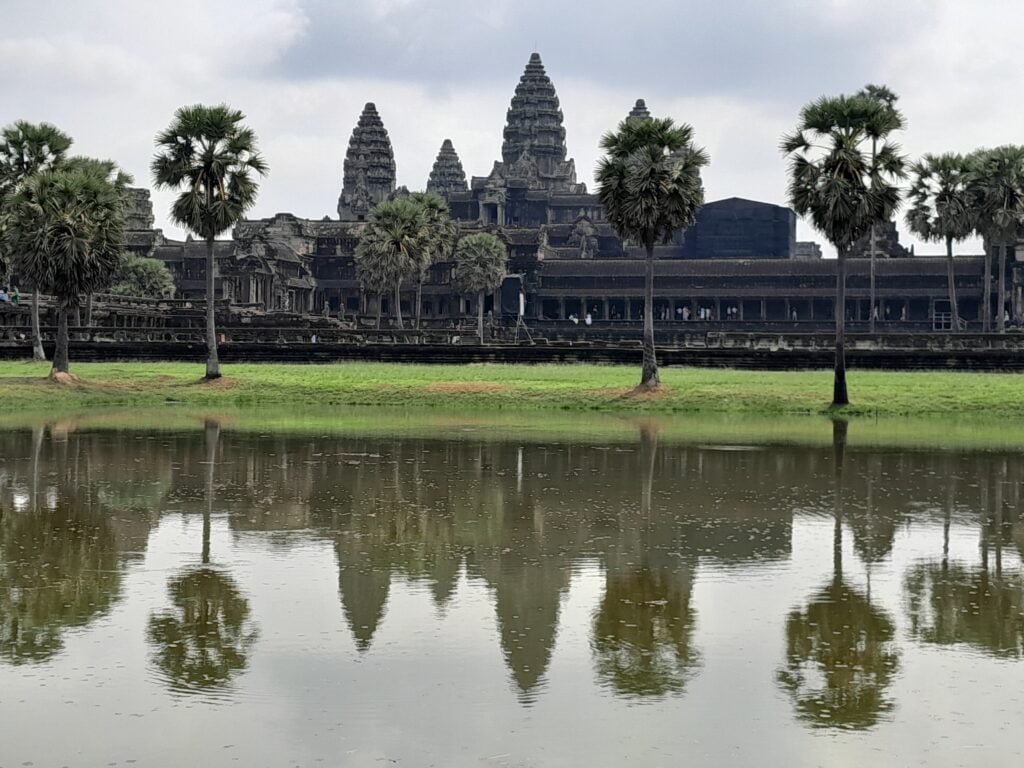
Tips on Prioritizing Temples Based on Interests and Time Constraints
Research Ahead: Familiarise yourself with the history and significance of each temple to align your itinerary with your interests, whether they are architectural, historical, or spiritual.
Consult Local Experts: Guides and guided tours can provide insights into the best times to visit specific temples and suggest itineraries that maximize your experience based on current conditions and interests.
Stay Flexible: Be prepared to adjust your plans based on weather, crowds, or spontaneous discoveries. Sometimes, the most memorable experiences arise from unexpected detours or moments of quiet reflection in less visited corners of the temple complex.
In optimizing your visit to Siem Reap’s temples, balancing structured planning with the openness to discovery can lead to a truly enriching and memorable experience.
Transportation Tips: Navigating Siem Reap and Angkor
Navigating the majestic landscapes of Siem Reap and the grand Angkor temple complex is an integral part of your adventure. Here’s how you can make the most of your transportation options, ensuring a smooth and respectful journey through this sacred land.
Variety of Transportation Options: Siem Reap offers a diverse array of transport modes tailored to every traveller’s preference and budget. From the Cambodian versions of tuk-tuks (or remork-moto – which is basically a large trailer hitched to a motorcycle) and bicycles to more modern options like taxis and e-bikes, you can choose your ideal way to explore the temples at your own pace. For those seeking a deeper connection with the environment, cycling offers an eco-friendly way to traverse the temple grounds, providing a serene and intimate experience. Meanwhile, tuk-tuks (or rather, remork-motos) remain a quintessential part of the Cambodian travel experience, offering a local and flexible mode of transport.
Recommendations for Reliable and Convenient Transport: For convenience and reliability, consider arranging your transportation through reputable companies, a specialist tour or your accommodation provider. Booking in advance can often secure you a knowledgeable and trustworthy driver, who can not only navigate the complex with ease but also share insights into the temples and local culture. If opting for a tuk-tuk or taxi, ensure that your vehicle is in good condition and agree on the fare or rental rate in advance to avoid any misunderstandings.
Safety Tips and Cultural Etiquette: When using local transportation, always prioritize safety and respect local customs. Wear helmets if cycling or riding motorbikes, and secure your belongings, especially in open vehicles like tuk-tuks. Be mindful of local etiquette, such as removing your shoes when entering certain temple areas and dressing modestly out of respect for the cultural and spiritual significance of the sites. Remember, your transportation choices not only affect your experience but also contribute to the local economy and environment, so choose wisely and respectfully.
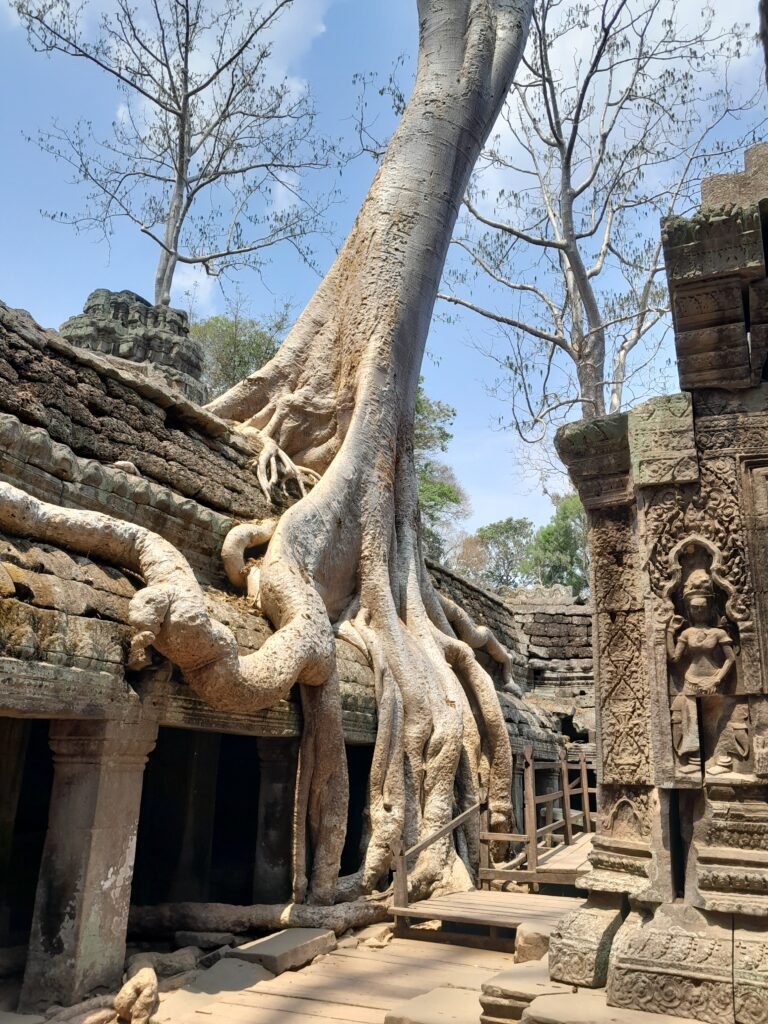
Ticket Essentials: Your Pass to Siem Reap’s Wonders
Discovering the architectural magnificence of Siem Reap’s temples starts with securing the right ticket. Understanding the available options ensures you make the most of your visit while respecting the heritage and preservation efforts of these ancient sites.
Ticket Types and Benefits: Siem Reap offers several ticket types to cater to varying durations and interests. The most common are 1-day, 3-day, and 7-day passes, each allowing ample time to explore at your own pace. Longer tickets provide the flexibility to visit during different times of the day, capturing the temples in varying lights and avoiding peak crowds.
Purchasing Process: Tickets can be purchased at the official Angkor ticket centre, located near the entrance to the temple complex. To avoid long queues, especially during peak tourist season, arrive early or consider purchasing later in the day for use the following day. Ensure you bring a valid ID (passport is ideal) as it may be required during purchase and at temple checkpoints, please note you will also have your photograph taken for your temple pass.
Maximizing Value and Avoiding Pitfalls: To get the best value, plan your visit according to the ticket duration—don’t rush through sites just to “get your money’s worth.” Respect the cultural and natural setting by following guidelines and disposing of waste properly. Be wary of unofficial ticket sellers and always verify the authenticity of your pass to prevent any inconveniences during your temple exploration.
Travel Guide: Reaching Siem Reap and Angkor Wat
Embarking on your journey to the majestic Siem Reap and its awe-inspiring temples involves navigating various travel options, each offering a unique perspective of the region’s landscape and culture.
Travel Options to Siem Reap: Visitors can reach Siem Reap by air, land, or water. The new Siem Reap–Angkor International Airport, which opened in 2023, welcomes flights from many major cities, providing a convenient entry point, but please note your transfer time from the airport to the Siem Reap itself will take about 50 mins by car. Overland routes include bus or car travel from neighbouring countries like Thailand and Vietnam, and offer scenic views along the way. Alternatively, more adventurous travellers might consider a boat trip along the Tonle Sap Lake, providing a serene approach to the city.
International Access and Connections: Siem Reap’s airport facilitates direct and connecting flights from across the globe, making it an accessible destination for international travellers. Key regional hubs like Bangkok, Singapore, and Kuala Lumpur offer frequent connections, easing the journey to this historic locale.
Tips for Smooth Travel and Entry: Ensure your passport is valid for at least six months beyond your travel date and check visa requirements based on your nationality. E-visas can simplify the entry process and are recommended for their convenience. Upon arrival, be prepared to navigate customs and immigration, respecting all local regulations. To enhance your travel experience, consider learning a few basic Khmer phrases and familiarize yourself with Cambodian customs, demonstrating respect and appreciation for the local culture as you begin your exploration of Siem Reap’s wonders.
Need Flights?

Where to Stay in Siem Reap
Finding the perfect place to stay in Siem Reap can significantly enhance your temple exploration experience, offering comfort and convenience after a day of adventure.
Accommodation Recommendations: Siem Reap boasts a wide range of accommodation to suit every budget and preference. Luxury seekers can find opulent hotels with spa services and fine dining, while budget travellers have numerous guesthouses and hostels offering clean, affordable rooms. For convenience, choose a stay near the Angkor complex or the vibrant city centre. Consider amenities like free Wi-Fi, pool access, and on-site dining when making your selection. On our recent visit, we stayed at the serene Amber Ankgor Villa and Spa, just a short distance from the centre of Siem Reap and with a very relaxing pool area, ideal for cooling off with a beer or a cocktail after a hard day’s temple hunting.
Unique Lodging Experiences: Enhance your temple visit with accommodations that offer a touch of Cambodian culture or unique experiences. Boutique hotels often feature traditional Khmer architecture and art, providing an immersive cultural experience. Eco-lodges and farm stays offer insight into local life and sustainable tourism practices.
Booking Tips and Peak Season Advice: To secure your ideal accommodation, book well in advance, especially during peak season (November to February). Compare prices and read reviews on trusted travel sites. Consider the timing of your visit; while the dry season offers comfortable temple exploration, the wet season can provide lush landscapes and fewer tourists. Remember to check for flexible cancellation policies and confirm your booking closer to your travel date to avoid any issues.
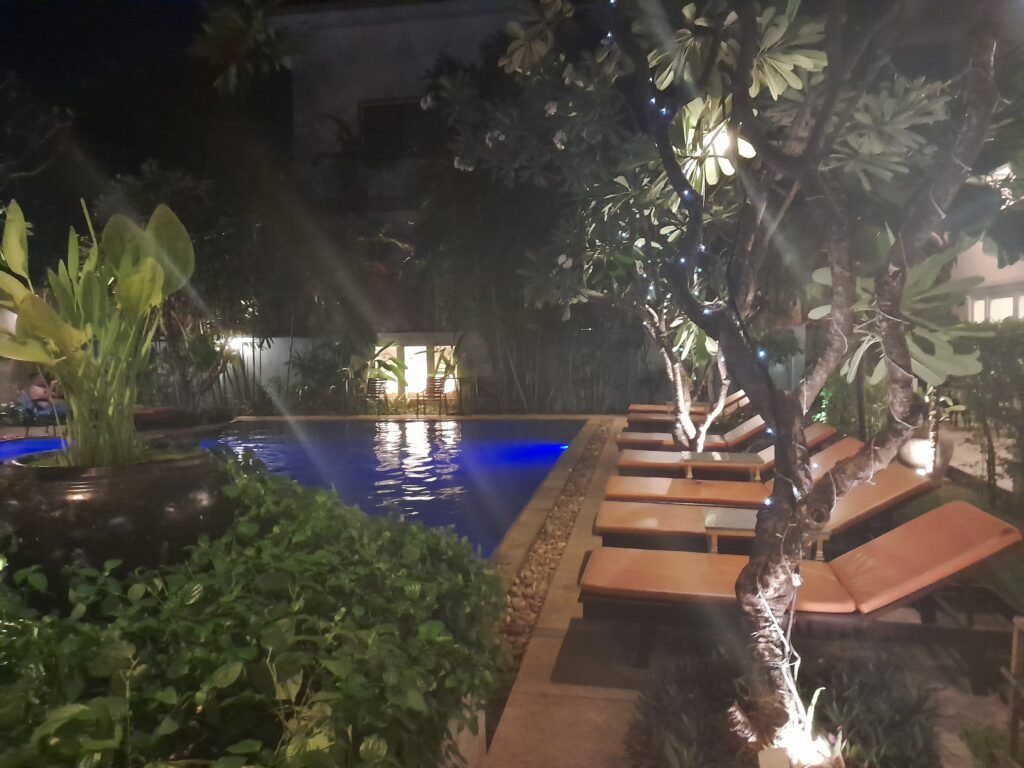
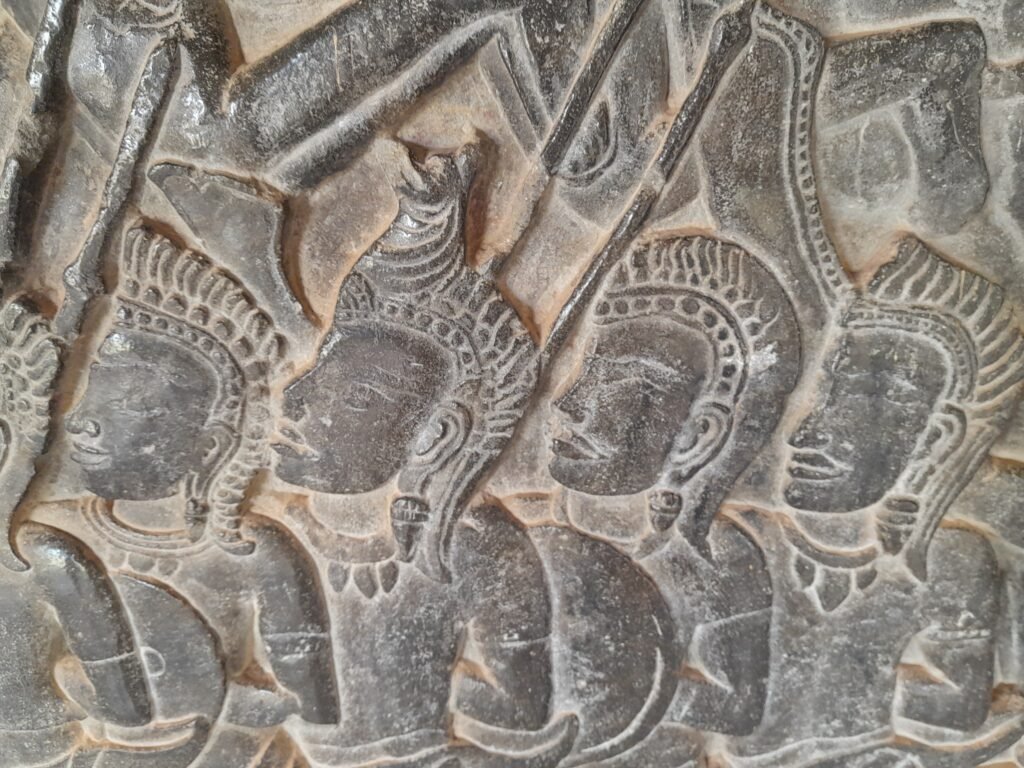
Top Tips for Exploring Siem Reap Temples
Delving into the spiritual and architectural grandeur of Siem Reap’s temples is a profound experience that demands thoughtful preparation and respect for the ancient heritage.
Best Times to Visit: To avoid the crowds and experience the temples in relative solitude, consider visiting during the early morning or late afternoon. Specific temples, like Angkor Wat, are renowned for their sunrise views, so plan to arrive early to secure a good spot. Conversely, temples like Ta Prohm or Banteay Srei offer serene beauty during the late afternoon when the light accentuates their intricate carvings.
Respectful Behaviour and Attire: Demonstrating respect at these sacred sites is paramount. Dress modestly, covering shoulders and knees, and remove hats and sunglasses when entering temple sanctuaries. Speak softly, and avoid disruptive behaviour. Remember that these are places of worship and cultural significance for many Cambodians.
Enhancing the Experience: To truly connect with the history and spirituality of the temples, consider hiring a knowledgeable local guide or join a tour that can provide insights into the site’s history, architecture, and religious significance. Take time to pause and absorb the atmosphere, perhaps meditating or simply sitting in quiet contemplation. Respect the sites by not touching the carvings or climbing on fragile structures, and always carry water and sun protection to ensure a comfortable and enriching exploration.
Look After Yourself: Ensure you take, or your tour/tour guide provides water for your exploration of the temples, don’t underestimate how quickly you can de-hydrate. Also ensure that you lather on the sunscreen to protect against sunburn and UV damage, absolutely essential in this part of the world, also pack a hat for shade and protection, especially if your hair is a distant memory – like mine! Finally, don’t forget mosquito repellent, the little beasties will be most active in the mornings and the evenings, so make sure you spray before catching those epic sunrises and sunsets.
Be aware that the ground around these ancient temples can be uneven and unpredictable, and especially at Ankgor Wat there are some very steep stairs to ascend to the top of the temple, therefore flip-flops are not advised, instead wear something more robust such as trainers when exploring the ruins.
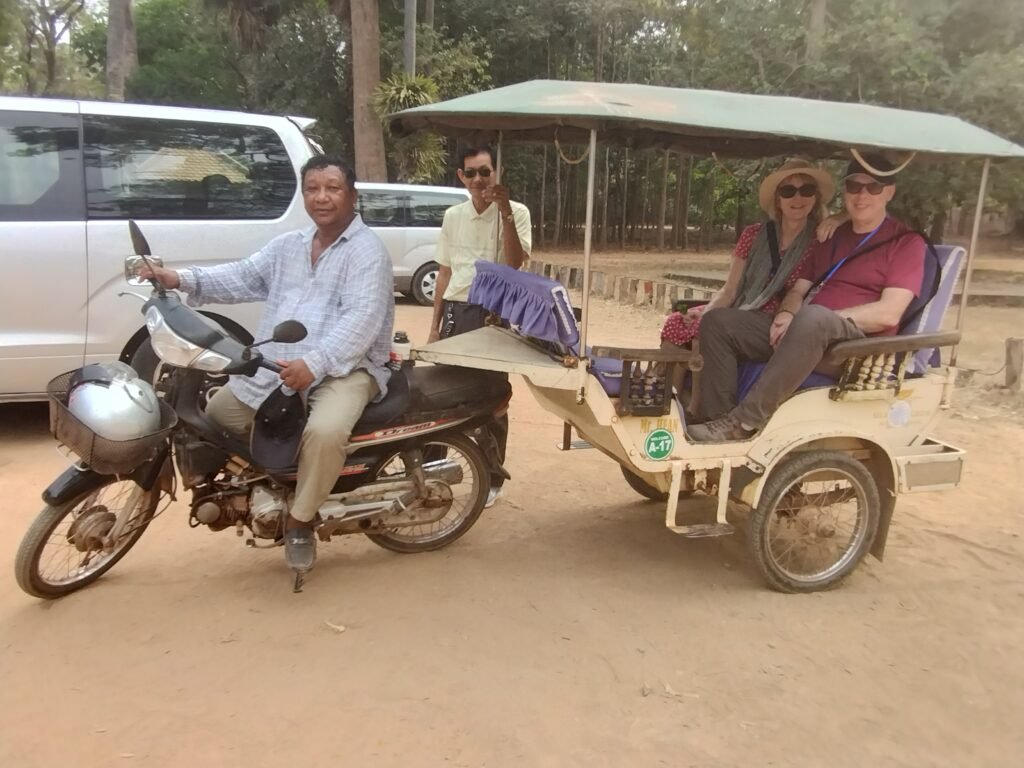
Top Ten Temples in Siem Reap
The temple complex of Siem Reap is a treasure trove of ancient wonders, each temple offering a unique window into the past. While Angkor Wat steals the spotlight, numerous other temples in the area promise equally fascinating experiences with their distinctive histories and architectural features.
Angkor Wat: The crown jewel of Angkor, known for its grand scale and intricate bas-reliefs, represents the epitome of Khmer architecture.
Bayon: Famous for its serene stone faces gazing across the land, Bayon stands at the heart of Angkor Thom, offering a mysterious and captivating allure.
Ta Prohm: Embraced by the jungle, this temple, featured in the 2001 movie Tomb Raider, is a poignant reminder of nature’s power, with trees intertwining among ancient stones.
Preah Khan: A less crowded, yet equally impressive site, known for its labyrinthine corridors and detailed carvings.
Banteay Srei: Often referred to as the ‘Jewel of Khmer Art’, this temple is renowned for its intricate and well-preserved bas-reliefs.
Banteay Kdei: A hidden gem offering a peaceful exploration experience, with fewer tourists and a meditative ambiance.
Neak Pean: An artificial island temple known for its unique circular arrangement and central sanctuary surrounded by water.
Ta Som: Small yet charming, this temple features a stunning fig tree growing over its eastern gate, creating a natural archway.
East Mebon: A temple-mountain style structure, originally set on an island, showcasing impressive elephant statues at its corners.
Phnom Bakheng: Popular for its hilltop location, offering breathtaking sunset views over Angkor Wat and the surrounding jungle.
Exploring these temples allows you to appreciate the diversity and ingenuity of Khmer architecture and artistry, urging visitors to look beyond Angkor Wat and delve deeper into Cambodia’s rich cultural heritage.
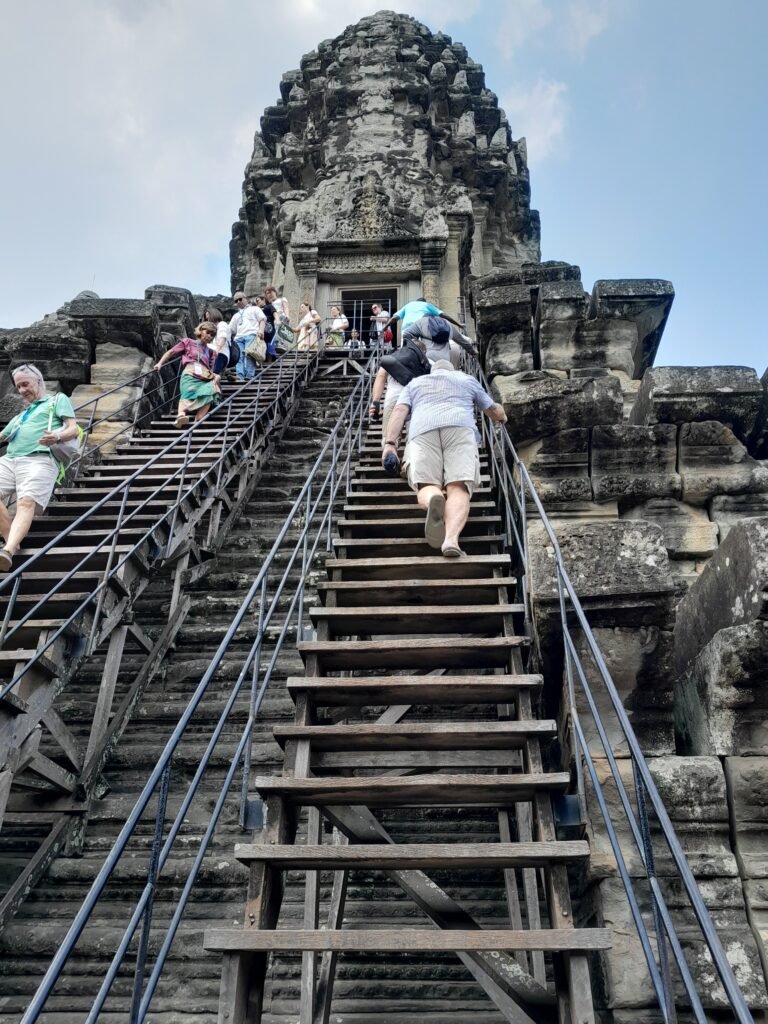
Embracing the Spirit of Siem Reap
In the heart of Cambodia lies the enchanting realm of Siem Reap, a testament to human creativity and resilience. As guardians of this heritage, it is our collective responsibility to honour and preserve these timeless monuments for future generations. Approaching Siem Reap with a sense of wonder and respect allows us to fully embrace the magic of its temples, enriching our souls and broadening our understanding of the past. We invite you to tread lightly on this sacred ground, immersing yourself in the beauty and mystery of Siem Reap. Experience its wonders firsthand and carry its stories with you, forever changed by their profound legacy.
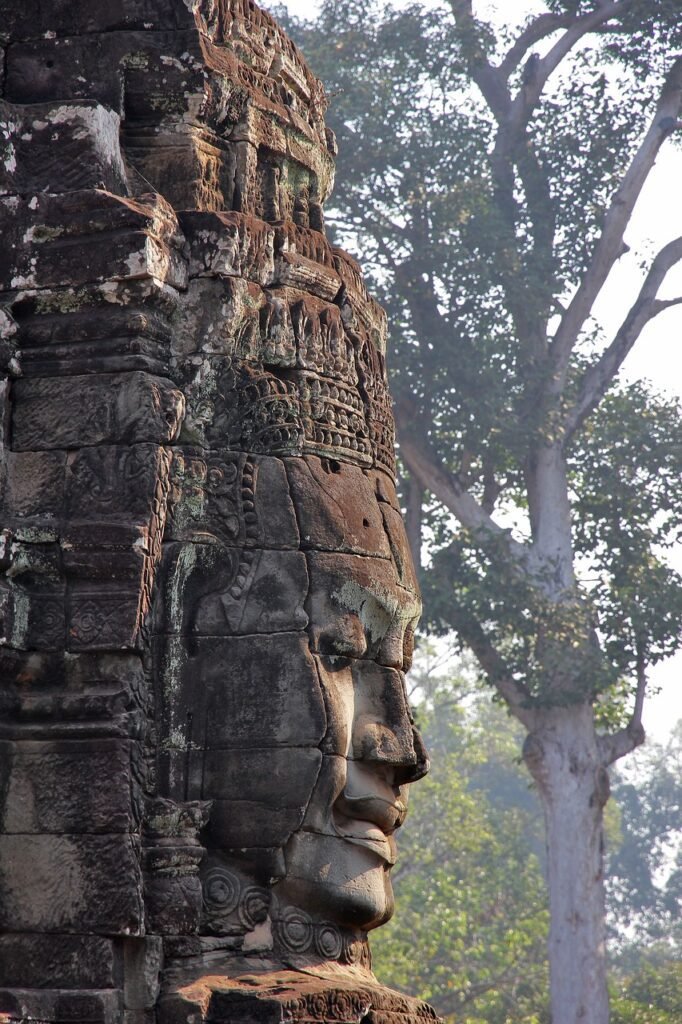
USEFUL RESOURCES – SEIM REAP
Accommodation: Booking.com
Activities: Get Your Guide
Flights: Skyscanner
Top Tips – SIEM REAP
For Hotels including self-catering apartments we use Booking.com, where you can filter by review score and many properties have a pay later/late cancellation policy should your plans suddenly change.
For travel insurance, we use and recommend using Staysure – specialists in over 50’s travel insurance, as we have always found them fair and easy to deal with.
Check our resources page for more budget tips and discounts from our days in transit!
Staying Safe
For the latest up-to-date guidance regarding travelling to Cambodia see the UK Government’s Travel Advice here.
Of course, the key thing is to have comprehensive travel insurance coverage to protect against, cancellations, theft, illness etc.

